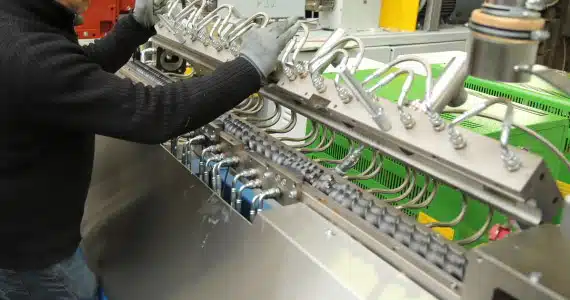The manufacturing world is continuously evolving, adapting to efficiency, precision, and sustainability demands. A pivotal aspect of this industrial evolution is the technology behind twin-screw extruders, a critical component in the plastics, food, and pharmaceutical industries.
These machines are vital for mixing, compounding, and processing various materials. The latest innovations in twin-screw extruder technology are setting new benchmarks for what’s possible in manufacturing, pushing boundaries, and opening doors to new possibilities.
In the journey to discover more about these advancements, it’s clear that the innovations span various aspects of technology. Engineers and scientists focus on enhancing material handling, energy efficiency, output quality, and operational flexibility. This article delves into what’s new in this field and anticipates what’s next, providing insights into the continuous transformation of twin-screw extruders.
Material and Surface Innovations
Recent developments in twin-screw extruder technology have revolutionized the way materials are processed. Innovations in screw design and surface treatments have broadened the spectrum of materials that can be efficiently processed, even those with challenging properties like high viscosity or sensitivity to heat. Enhanced screw geometries, featuring variable pitch and depth, allow for more nuanced mixing and melting processes.
These improvements lead to better dispersion of additives and more uniform material properties. Furthermore, surface treatments like wear-resistant coatings extend the life of the screws and reduce maintenance needs. This combination of design and material science innovations is pivotal in improving the quality of the end product, reducing waste, and lowering energy consumption.
Energy Efficiency and Sustainability
In response to the increasing demand for sustainable manufacturing practices, twin-screw extruder manufacturers focus on energy efficiency. Innovations include integrating advanced motor technologies, such as high-efficiency drives that reduce electrical consumption. Energy recovery systems are another key development, where the heat generated during the extrusion process is captured and reused, further reducing the overall energy footprint.
These advancements significantly reduce operating costs and, more importantly, support the global initiative towards sustainable and responsible manufacturing practices. The synergy of energy-efficient designs with sustainable material processing is setting new standards in the industry.
Automation and Control Technology
Integrating automation and advanced control systems marks a significant leap in twin-screw extruder technology. Modern extruders are equipped with state-of-the-art sensors that monitor various process parameters like temperature, pressure, and screw speed. These data points are fed into advanced control systems that make real-time adjustments, ensuring optimal performance and product consistency.
The ability to quickly adapt to changes in material properties or process conditions greatly enhances product quality. Furthermore, these technological advancements facilitate rapid changeovers and process adjustments, thus increasing the flexibility of manufacturing operations and reducing downtime.
Specialty Applications and Customization
The evolving market demands for specialized and high-quality products drive the customization of twin-screw extruders. Manufacturers now offer machines tailored for specific materials or products, such as biodegradable polymers, high-performance plastics, and pharmaceutical compounds.
This specialization extends to unique processes like hot-melt extrusion for pharmaceuticals or extrusion-based 3D printing. The ability to customize the extruder setup, from screw design to barrel configuration, allows for the processing of niche materials and the development of innovative products, meeting the specific needs of various industries.
Future Directions
The future of twin-screw extruder technology is brimming with potential for further innovation. Continued research and development are expected to bring more sophisticated materials handling capabilities, enhancements in energy-efficient designs, and smarter control systems. A particularly exciting development is the potential integration of twin-screw extruders with Industry 4.0 technologies.
By utilizing data analytics and connected manufacturing processes, this integration has the potential to usher in a new era of automation. Adopting these advanced technologies will lead to more efficient, flexible, and intelligent manufacturing systems, shaping the future of industrial production.
Conclusion
Innovations in twin-screw extruder technology are transforming the manufacturing landscape, enabling more efficient, sustainable, and high-quality production. As these advancements continue, industries that rely on these machines can expect significant improvements in their operations and products. The future holds great promise for twin-screw extruder technology, and it’s an exciting time for all involved in this field.


